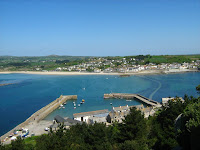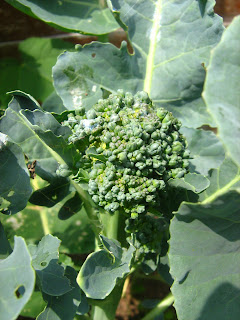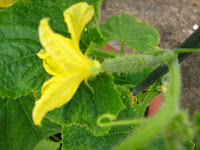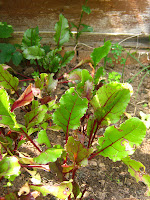We stayed for four days in a cottage in Sennen Cove, a lovely quiet village with a beautiful beach. The cottages were great, beautiful setting, good conditions and a fair price.
We were in easy reach of Land's End (Britain's most westerly point), and we walked there enjoying the great views. We also discovered some great animal-shaped rocks along the way :)



On the next day we went to St Michael's Mount, a very touristic sight in Cornwall but still very nice to visit. The island is accessible at low tide on a causeway, and at high tide by boat. You can visit the clifftop castle which is now a museum, and the much older church, and also the castle gardens. Below, a photo of the island from mainland, and two photos from the top of the island.



One great sight is Minack Theatre, an open-air theatre built in the 1930s, resembling an ancient site. It is a beautiful structure and what is remarkable about it is that it was built and maintained through the passion and determination of a single woman who undertook great efforts to keep it alive for performances. The theatre is still functional in the warm months.

A fantastic sight was Tintagel Castle. The ruins of what used to be a fortification have been linked with the legends of King Arthur, said to have been Arthur's birthplace, and you can also visit 'Merlin's Cave' at the site. There is no historical proof of this though. However, the surroundings are absolutely beautiful and if you want to see it I suggest you do it soon - like most sights on the south-west coast, the castle is threatened with imminent collapse due to coastal erosion.



Another really cool place we saw (but have no photos of) was the Eden project - for those not familiar with it, these unique botanical gardens were built on the site of a disused mine. The most distinctive feature are the two giant domes (biomes) harbouring rainforest and mediterranean plants. It was really interesting to actually see banana and vanilla trees, and the plants making all the exotic spices we buy in the supermarket. We drank fresh coconut juice and coffee from beans grown on site. It's also really well set up to present all the actual and possible uses of various plants, such as textile, medical, dyes, etc. Really interesting and definitely worth going!
So if you haven't done so already, do visitcornwall.com :)















